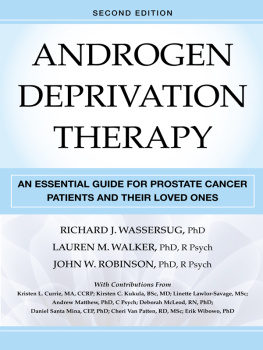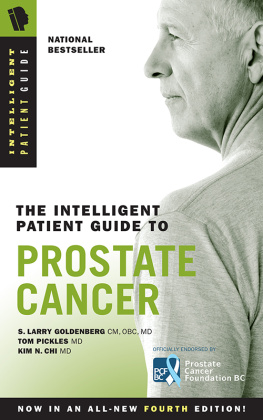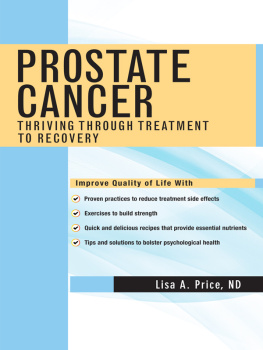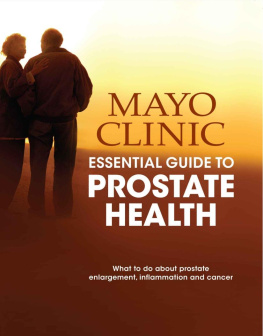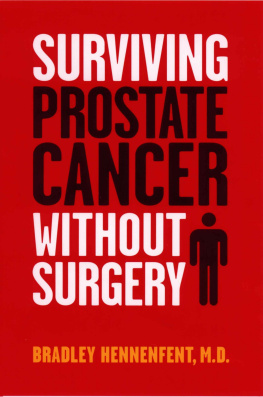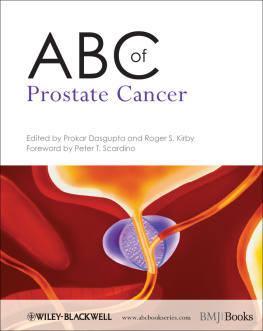CONTENTS
Guide
ACKNOWLEDGMENTS
This book would not have been possible without the contributions of the androgen deprivation therapy (ADT) Working Group, a collection of approximately 20 people, including PhDs, MDs, nurses, and students, who work with, and are dedicated to helping, prostate cancer patients recognize and manage the side effects of their treatments. The ADT Working Group was established a decade ago and has been instrumental in helping us research, write, field test, edit, and revise this book. The authors and many contributors to this book are a part of the ADT Working Group.
We would also like to acknowledge the following people for their contributions:
Kirsten Kukula was the definitive editor of the first edition of this book, before moving on to medical school. Erik Wibowo took over the task of editor for the second edition and acted as a Program Coordinator for our ADT Educational Program. Kirsten Kukula and Erik Wibowo not only edited multiple drafts of the manuscript, but undertook key literature searches that contributed materially to every chapter in the book. We thank them profusely for tightening our writing. Every page has profited from their clarity of thought and comprehensive overview of this project. Erik Wibowo took on the challenging task of helping with the final copy editing of both editions of the book. We thank them both for their technical help. There is one more person to thankMs. Carly Sears, who helped us with the final proofreading of the text for this edition of the book.
Daniel Santa Mina and Andrew Matthew contributed to the development and writing of the chapter on exercise. Special thanks to Nicole Culos-Reed for additional input on the chapter on exercise. Andrew Matthew also provided feedback and editorial revisions on the first edition of the book.
Andrew Matthew and Kristen Currie contributed to the chapter on healthy eating. Cheri Van Patten extensively updated that chapter for the second edition and adapted its content for our U.S. audience.
Deborah McLeod is a founding member and driving force of the ADT Working Group.
Several physicians, who treat prostate cancer patients on ADT, offered critical review of the book, including Paul Abel, Shabbir Alibhai, Peter Black, Stacy Elliott, Dean Ruether, Kishore Visvanathan, and Derek Wilke.
The inclusion in this second edition of information specifically for gay and bisexual men was enriched by Richard Wassersugs collaboration with Tsz Kin (Bernard) Lee in Vancouver, British Columbia, and Gary Dowsett in Melbourne, Australia. Richard also thanks S. Larry Goldenberg for his commitment to developing supportive care resources for prostate cancer patients and their families in Vancouver. The Australian Research Centre in Sex, Health and Society provides Richard a research home in the southern hemisphere, and colleagues down under that share his interests in helping prostate cancer patients recover from the side effects of their cancer treatments.
The ADT Working Group has received financial support from a variety of sources.
The initial meeting of the group in 2008 was supported by grants from the Nova Scotia Health Research Foundation, the Dalhousie Cancer Research Program (now the Beatrice Hunter Cancer Research Institute), and a private donation from Lori Wood, MD.
Development and assessment of this book was supported by a grant from the Canadian Institutes of Health Research (Richard Wassersug and John Robinson, coprincipal investigators). Lauren Walkers dissertation research, which field-tested a draft of the first edition of the book, was supported by scholarships from the Social Sciences and Humanities Council of Canada, and Alberta InnovatesHealth Solutions, as well as a Canadian Male Sexual Health Council Grant (John Robinson, Principal Investigator). Linette Lawlor, a summer student working with Lauren Walker and John Robinson, was funded by the Program for Undergraduate Research Experience, University of Calgary, to help her with the second revision.
We are pleased to acknowledge, in alphabetical order, the pharmaceutical companies that manufacture and market medications used in treating prostate cancer and have supported this work. We extend special thanks to Peter Black for bringing this project to the attention of all those companies. Their broad support attests to the companies commitment to meet the needs of prostate cancer patients dealing with the consequences of ADT.
AbbVie
Amgen
AstellasPharmaCanada, Inc.
AstraZeneca Canada, Inc.
Ferring, Inc.
Johnson & Johnson Shared Services (Janssen Biotech, Inc.)
Sanofi Canada
Several institutions deserve special mention for the long-term support that they have provided to the ADT Working Group:
Dalhousie University, Capital Health, and the Nova Scotia Cancer Centre in Halifax, Nova Scotia
Tom Baker Cancer Centre, University of Calgary, and Prostate Cancer Center in Calgary, Alberta
Vancouver General Hospital, Vancouver Prostate Centre, British Columbia Cancer Agency, and the University of British Columbia in Vancouver, British Columbia
Princess Margaret Cancer Center in Toronto, Ontario
APPENDIX
In this appendix you will find additional copies of these tools for change:
1. Drug chart
2. Prostate-specific antigen (PSA) chart
3. Hot flash diary
4. Pros/cons table
5. Action Plan
6. Goal setting and confidence
7. Side effects self-assessment
8. Screening for emotional distress mood questionnaire
9. Beliefs awareness exercise
1. Drug Chart
This chart can be used to document your specific medications for androgen deprivation therapy (ADT). For example, you might list the medication that you receive for your injections and how often you get your injection.
| Medication | Dose and Starting Date | How Often? |
2. Prostate-Specific Antigen (PSA) Chart
This is a chart for you to use to track your PSA results.
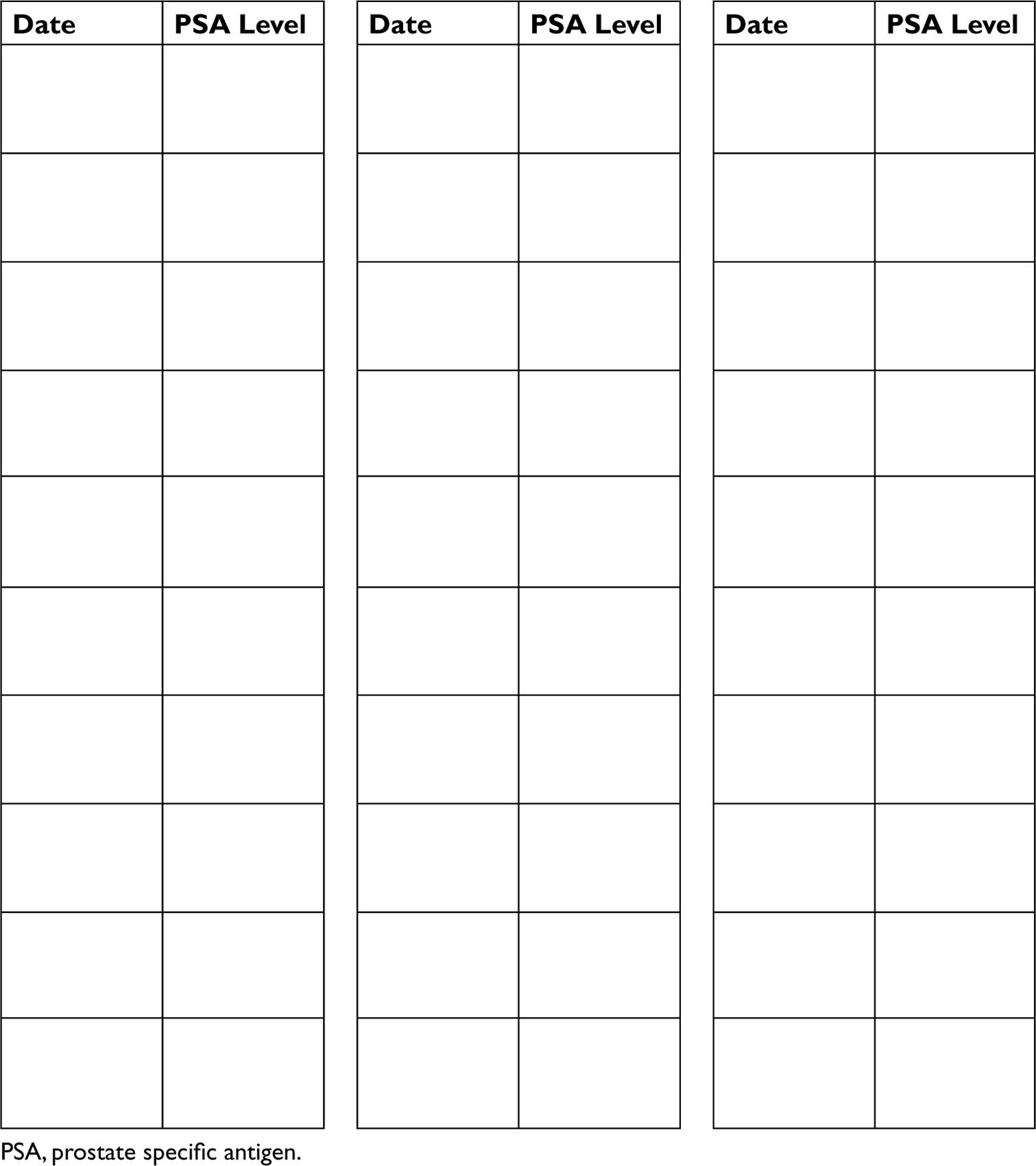
3. Hot Flash Diary
This exercise will help you cope with bothersome hot flashes. The instructions for how to complete this exercise can be found on .
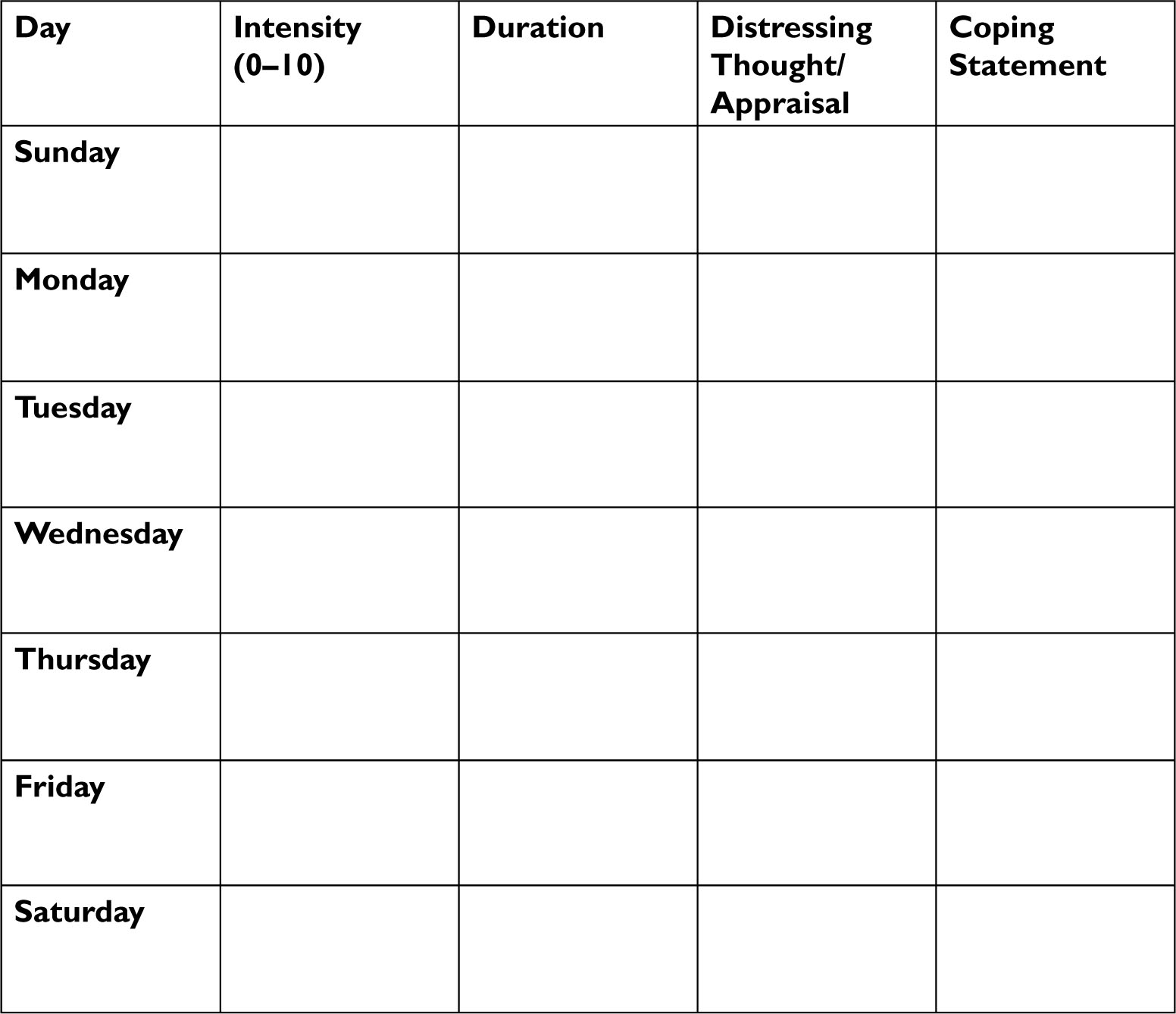
4. Pros/Cons Table
Sometimes, even though you want to make a lifestyle change, you may need to persuade yourself that the change is in fact worthwhile. A pros/cons table is a great way to convince yourself, and you can redo it anytime you feel as if your life and priorities have shifted.
| PROS | CONS |
| MAKING THE CHANGE: |
| STAYING THE SAME: |
5. Action Plan
Throughout the book there are suggestions for changes that will help you and your partner maintain a high quality of life while on ADT. An Action Plan is a structured way to help you be clear about your goals, and increase the likelihood that you will follow through on your plans.
Here are some blank copies that you can fill out. It helps to be as specific as possible when you are making your Action Plan. Specific examples are detailed in each chapter.
Action plan: ____________________
What I plan to do: ____________________
When I plan to do it: ____________________
Who I might do it with: ____________________
Where I plan to do it: ____________________
Why my plan is important: ____________________
What might get in the way: ____________________
Next page
